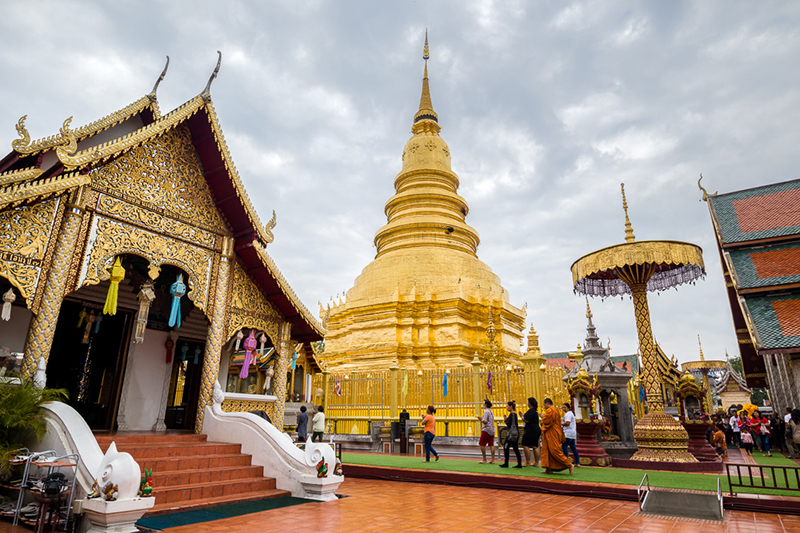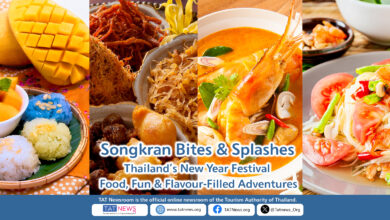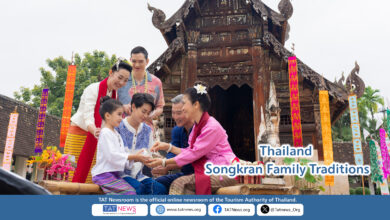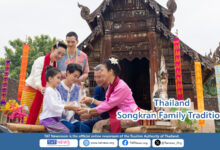
Lamphun was the capital of the Hariphunchai Kingdom and the northernmost city of the Mon Kingdom of the Dvaravati period, and in 1281 was brought into the new Lanna Kingdom by King Mengrai of which Chiang Mai was made the capital. In the late 19th century, Lamphun became part of Siam.
Lamphun is most often visited as a day trip from Chiang Mai although it certainly warrants an overnight stay. It’s a 40-minute drive south from Chiang Mai passing through the exotic Northern Thai countryside and, if one takes the old Highway 106 route, along what’s known as the Rubber Tree Road. Much as the name suggests, a stretch of the road is lined with lofty rubber trees along both sides and makes for a pleasant photo opp.
Ancient Lamphun and Hariphunchai Tour
Once in Lamphun town, the provincial seat, the first place to visit for many is Wat Phrathat Hariphunchai, the province’s most famous temple. Its earliest origins date back to around 897 when the king of Hariphunchai is said to have had what is now the central stupa built to house a hair strand of the Buddha. Legend has it that the Buddha visited this area and in the temple compound’s southwestern corner there are footprint indentations said to be his.
While Wat Phrathat Hariphunchai’s central stupa is from the 9th century, the temple compound was built during the 11th century. There was restoration work carried out in the mid-15th century, and then in the 1930s, renovations were done under the Buddhist monk Khruba Sriwichai, a Lamphun native who in his lifetime was involved in the repair and construction of over 100 temples, roads and other projects.
Along with its two chedis, Wat Phrathat Hariphunchai – upon which Chiang Mai’s famous Wat Phrathat Doi Suthep temple was modelled – has a 19th century library, several Buddha images including one from the 15th century, and an enormous bronze gong said to be the largest in the world. The main chedi has at its top a nine-tiered umbrella made from almost 6,500 grammes of gold.

A short distance from Wat Phrathat Hariphunchai is Wat Chamthewi, a smaller temple but one highly revered for it is believed the ashes of Queen Chamthewi are enshrined in one of the pagodas here. Also known as Wat Ku Kut, the temple’s wihan or worship hall features murals depicting the life and times of the warrior queen and there’s also a small museum dedicated to her.
For a glimpse into Lamphun’s celebrated history, the Hariphunchai National Museum next to Wat Phrathat Hariphunchai houses exhibits and artefacts from the Dvaravati, Hariphunchai, Lanna and Rattanakosin periods. Items on display include utensils, carvings, amulets, inscription stones in Mon and Lanna scripts and prehistorical human skeletons. Behind this museum is the Lamphun Community Museum, which focuses on a more modern era; it displays texts, photos, radios, gramophones and other items from the past century.

Local Art and Culture
The downtown area is also home to the Institute of Hariphunchai Handwoven Cloth, a centre that plays a key role in helping to preserve and promote the woven cloth art Lamphun is famous for. The unique yok dok pattern is a cultural heritage of Lamphun, and yok dok silk cloth’s history dates back more than a century. The Institute’s founder was also instrumental in getting GI status (geographical indication) for the silk cloth in 2007.
Natural Attractions and National Parks
Speaking of national parks, there are three in Lamphun province including one of the country’s newest.
An hour’s drive some 60 kilometres northeast of the provincial seat, Mae Takhrai National Park was officially listed as a national park in December 2017 and covers a 356 square kilometre area of Lamphun’s Mueang and Ban Thi districts and Chiang Mai’s San Kamphaeng, Doi Saket and Mae On districts. Its mountain and forest terrain is home to such wildlife as macaques, gibbons, tigers and various bird species like parrots, hawks and egrets, and there are waterfalls to visit.
Just under an hour’s drive east from town, the 255-square-kilometre Doi Khun Tan National Park straddles the mountainous terrain separating Lamphun and Lampang provinces and offers hiking trails, waterfalls, bungalow accommodation and camping.
A renowned manmade feature of the Park is the Khun Tan Railway Tunnel, which at 1,352 metres is the longest in Thailand. It also took the longest time to build, with well over a decade spent on its construction beginning in 1907. It is said over 1,000 workers died during the construction from suffocation, accidents, malaria and tigers, and a monument in front of the Tunnel is dedicated to them and the German railroad engineer Emil Eisenhofer who directed the project.
Around a two and a half hours’ drive from the provincial seat – this time just over 130 km to the south via Route 106, Mae Ping National Park spans 1,003 square kilometres across Li district in Lamphun, Doi Tao district in Chiang Mai and Sam Ngao district in Tak. Its mountain and forest terrain offers trekking, birdwatching, camping and bungalow and floating raft house accommodation, while the local wildlife includes deer, wild pigs, gorals and macaques, langurs and gibbons.
The Park’s picturesque Ko Luang Waterfall is considered to be among the ‘must-see’ of Thailand’s waterfalls. Its water changes colour with the seasons, from turquoise in the summer months of February to May to cerulean in the cooler months of November to February. The nearby lime caves are known for their stalactites and stalagmites.
Local Community
Enroute to and from Mae Ping National Park a stop can be made in Li district, about 25 km from the Park, to visit Ban Phrabat Huai Tom. This thriving Karen community are skilled weavers, and there is a handicraft and cultural centre selling their beautifully woven fabrics and textiles. The Ban Phrabat Huai Tom villagers are vegetarian and mostly farmers, and visitors can learn about their lifestyle and culture.

Other places to visit in the area include the impressive Phra Mahathat Chedi Sri Wiangchai, a golden-coloured pagoda standing 40 metres wide and 70 metres high (said to be the biggest in Thailand) and which is surrounded by many smaller pagodas and Buddha images. The chedi is not actually a temple itself, this is located just over a kilometre away. Known as Wat Phra Buddha Bat Huai Tom, this picturesque temple is under the care of the Phra Bhat Huai Tom Royal Project Development Centre.

The Land of Longan Fruit
Lovers of longan will love Lamphun, for the province is a major producer of this small round fruit that’s similar in taste to lychee. The season for longan (Lamyai in Thai) is July to August and this is when Lamphun puts on its annual longan festival, amid the other unique festivals and nationwide festivals it celebrates throughout each year. There are stalls selling longan and longan-related snacks, longan fruit and longan beauty queen contests, a parade and musical performances all in celebration of Lamphun’s favourite fruit.
As one of the 55 secondary destinations being promoted in the Tourism Authority of Thailand (TAT)’s ‘Amazing Thailand Go Local’ campaign, Lamphun is a wonderful add-on to its famous neighbour Chiang Mai. But visiting can work best when included in a five-to-seven-day road trip starting in Chiang Mai, and stopping in Lamphun, Lampang, Phrae and Nan.









